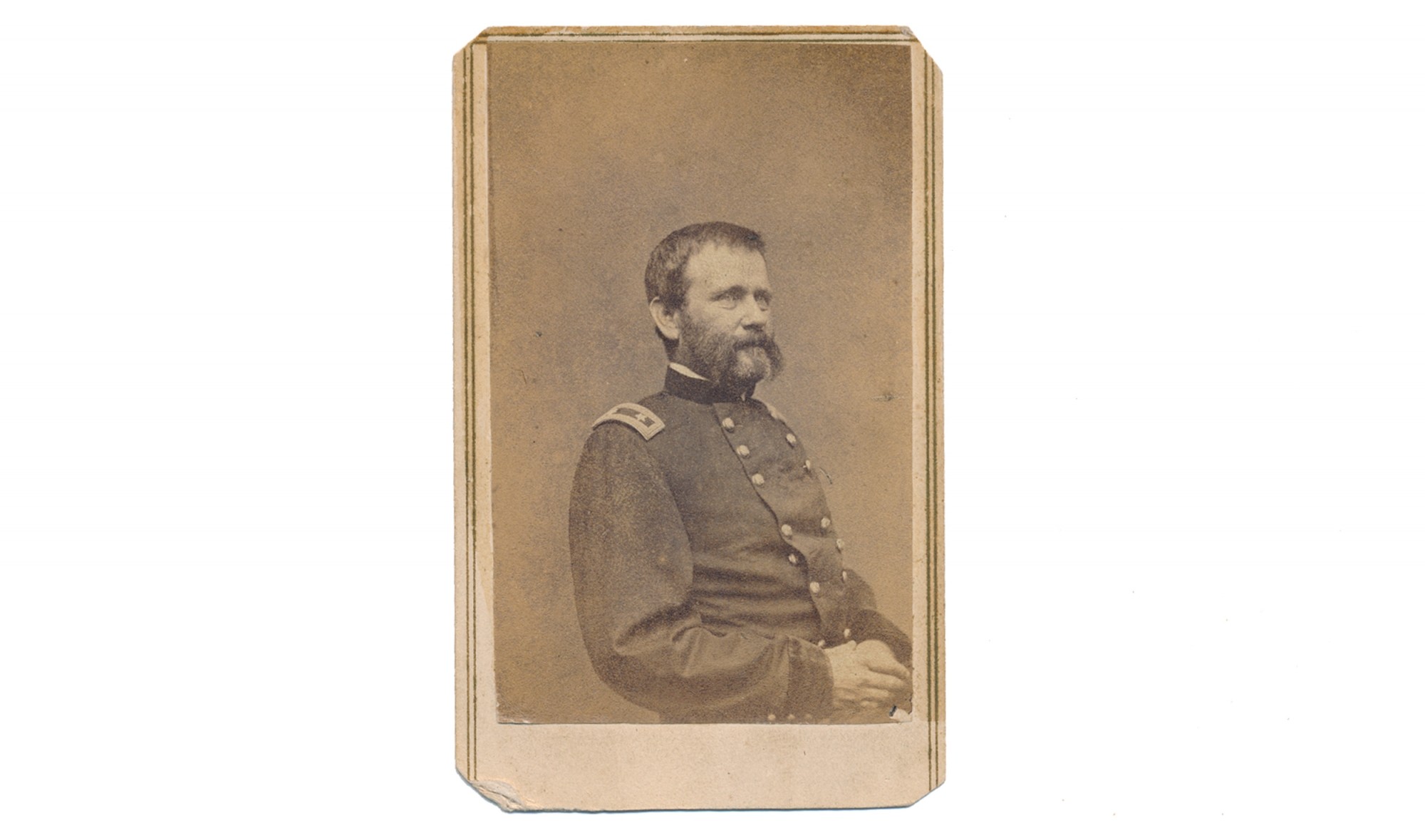site search
online catalog
CDV OF US GENERAL WILLIAM BUEL FRANKLIN

$125.00 SOLD
Quantity Available: None
Item Code: 801-123
CDV is a waist-up sitting view of General William B. Franklin. He is wearing a dark colored double breasted frock coat with shoulder boards.
Reverse is marked with the photographer’s imprint which reads, “PUBLISHED BY E & H.T ANTHONY, 501 BROADWAY, NEW YORK, FROM PHOTOGRAPHIC NEGATIVE IN BRADY’ NATIONAL PORTRAIT GALLERY”.
Image is clear and the contrast is good. Surface has some light dirt from age.
William Buel Franklin (February 27, 1823 – March 8, 1903) was a West Point graduate, career United States Army officer and a Union Army general in the American Civil War. He rose to the rank of a corps commander in the Army of the Potomac, fighting in several notable early battles in the Eastern Theater.
Soon after the beginning of the Civil War, Franklin was appointed colonel of the 12th U.S. Infantry, but three days later, on May 17, 1861, he was promoted to brigadier general of volunteers. He led a brigade at First Bull Run, and afterwards became a division commander in the newly created Army of the Potomac. In March 1862, the army was formed into corps, and Franklin appointed to head of the VI Corps, which he then led in the Peninsula Campaign. He was promoted to major general on July 4, 1862. During the Northern Virginia Campaign, Franklin stayed with the main army and did not participate in it. At Antietam, his VI Corps was in reserve. At Fredericksburg, he commanded the "Left Grand Division" (two corps, under Maj. Gens. John F. Reynolds and William F. Smith), which failed in its assaults against the Confederate right, commanded by Lt. Gen. Thomas J. "Stonewall" Jackson.
As political intrigue swept the Union Army after Fredericksburg and the infamous Mud March, Franklin was alleged to be a principal instigator of the "cabal" against Burnside's leadership. Burnside caused considerable political difficulty for Franklin in return, offering damaging testimony before the powerful U.S. Congress Joint Committee on the Conduct of the War and keeping him from field duty for months. When Joseph Hooker took command of the army that February, Franklin resigned his command, refusing to serve under him. During the 1863 Gettysburg Campaign, Franklin was home in York, Pennsylvania, and assisted Maj. Granville Haller in developing plans for the defense of the region versus an expected enemy attack.
Franklin was reassigned to corps command in the Department of the Gulf and participated in the ill-fated 1864 Red River Campaign. He was wounded in the leg at the Battle of Mansfield in Louisiana. Returning from the field with his injury, he was captured by Maj. Harry Gilmor's Confederate partisans in a train near Washington, D.C., in July 1864, but escaped the following day. The remainder of his army career was limited by disability from his wound and marred by his series of political and command misfortunes. He was unable serve in any more senior commands, even with the assistance of his West Point classmate, friend, and future president, Ulysses S. Grant.
Following the Civil War, General Franklin relocated to Hartford, Connecticut, and became the Vice-president of the Colt Firearms Manufacturing Company until 1888, as well as a director on the boards of several manufacturing concerns. He supervised the construction of the Connecticut State Capitol Building, and served on various boards and commissions, where his engineering experience proved helpful in expanding Hartford's public water service. In 1861, Franklin was elected a Hereditary Member of the Pennsylvania Society of the Cincinnati. After the Civil War, General Franklin became a member of the Military Order of the Loyal Legion of the United States. In 1887 he joined the Aztec Club of 1847 and was also a member of the Connecticut Society of Colonial Wars.
He was vice president of a Hartford area insurance company, and a delegate to the 1876 Democratic National Convention. In June 1888, after his retirement from Colt Firearms, he was named as the U.S. Commissioner-General for the Paris Exposition of 1889.
William Franklin died in Hartford, Connecticut in 1903 and is buried near his birthplace in York, Pennsylvania, in Prospect Hill Cemetery.
~~~~~~~~~~~~~~~~~~~~~~~~~~~~~~~~~~~
THIS ITEM, AS WITH ALL OTHER ITEMS AVAILABLE ON OUR WEB SITE,
MAY BE PURCHASED THROUGH OUR LAYAWAY PROGRAM.
FOR OUR POLICIES AND TERMS,
CLICK ON ‘CONTACT US’ AT THE TOP OF ANY PAGE ON THE SITE,
THEN ON ‘LAYAWAY POLICY’.
THANK YOU!
Inquire About CDV OF US GENERAL WILLIAM BUEL FRANKLIN
For inquiries, please email us at [email protected]
Most Popular
Historical Firearms Stolen From The National Civil War Museum In Harrisburg, Pa »
Theft From Gravesite Of Gen. John Reynolds »
Cavalry Carbine Sling Swivel »
Fine Condition Brass Infantry Bugle Insignia »
featured item
VERY RARE REVOLUTIONARY WAR 84th REGIMENT, ROYAL HIGHLAND EMIGRANTS, CARTRIDGE BOX PLATE, ONE OF FIVE KNOWN
This is one of five known examples of the rare cartridge box plate worn by the Royal Highland Emigrants, the 84th Regiment of Foot, in the Revolutionary War. These are identical to the plates worn by the 71st Regiment and were certainly produced by… (844-32). Learn More »




